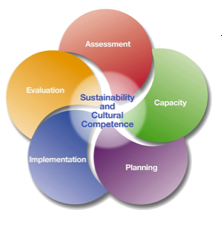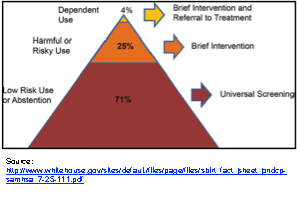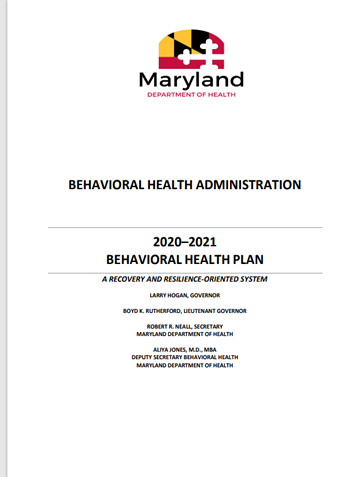Online Course
NRSG 780 - Health Promotion and Population Health
Module 10: Leading Causes of Morbidity and Mortality
Population-based Initiatives to Reduce the Burden of Mental Health and Mental Disorders
National Planning Models
SAMHSA’s Strategic Prevention Framework (SPF) is a five step guide to the selection, implementation and evaluation of evidence-based, culturally appropriate, sustainable community-based behavioral health promotion and substance use prevention programs
 The SPF includes these five steps:
The SPF includes these five steps:
- Step 1. Assess Needs
- Step 2. Build Capacity
- Step 3. Plan
- Step 4. Implement
- Step 5. Evaluation
SAMHSA’s Focus on Prevention is a national planning model for communities to move from concerns about substance abuse to evidence-based solutions. A unique feature of this guide is that it recognizes the different problems faced and the varying resources and experiences to develop prevention programs.
SAMHSA’s Screening, Brief Intervention and Referral to Treatment (SBIRT) is a public health approach to the delivery of early intervention and treatment services for people with substance use disorders and those at risk for developing those disorders that focuses on the many different types of community settings that provide opportunities for early intervention with at-risk substance users before more severe consequences occur.
Alcohol and drug abuse occur along a continuum in terms of level of consumption and consequences as is noted in the treatment pyramid noted below. The pyramid has been developed to show the role of SBIRT in addressing needs across the continuum of use. SBIRT has three major components: screening, brief intervention and referral to treatment.

Statewide

Source: Source: https://bha.health.maryland.gov/Documents/Final%202020-2021%20Behavioral%20Health%20Plan.pdf
The Maryland Department of Health's most recent Behavioral Health Administration Behavioral Health Strategic Plan is a blueprint for planning, policy and services that aims to provide a coordinated system of care to residents with behavioral health conditions. Through publicly funded services and supports, the Behavioral Administration works to promote recovery, resiliency, health, and wellness for individuals who are at risk for emotional, substance-related, addictive, and psychiatric disorders to improve their ability to function effectively in their communities.
DHMH’s planning goals align with SAMSHA’s strategic initiatives and target mental illness, substance-related and other addictive disorders. The goals are to:
- Increase access to care
- Improve quality of care in the public behavioral health system
- Improve coordination of care
- Strengthen and expand suicide prevention programs
For more information review the Behavioral Health Plan available at https://health.maryland.gov/bha/Documents/Final%202020-2021%20Behavioral%20Health%20Plan.pdf
For more information on Maryland’s Behavioral Health Programs and Resources review the Behavioral Health Administration website at https://health.maryland.gov/bha/Pages/programs-and-resources.aspx
This website is maintained by the University of Maryland School of Nursing (UMSON) Office of Learning Technologies. The UMSON logo and all other contents of this website are the sole property of UMSON and may not be used for any purpose without prior written consent. Links to other websites do not constitute or imply an endorsement of those sites, their content, or their products and services. Please send comments, corrections, and link improvements to nrsonline@umaryland.edu.